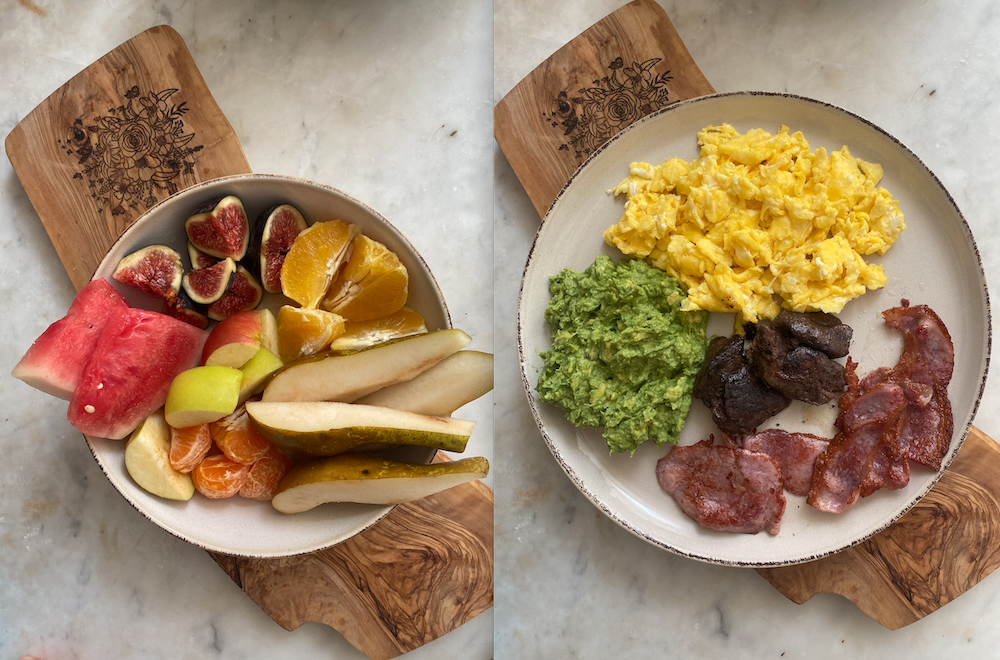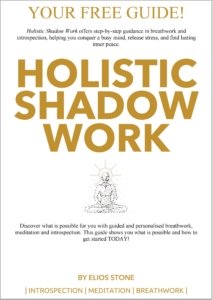What you eat is not the whole story.
At the bottom of this article is a Holistic Diet Diary Practice for practical ways to change your life.
When you fear the reactions that your body is going to have to certain internal or external stimulation it becomes exhausting. I know this well. After years of ignoring physical symptoms, I finally got to the bottom of things and released what had become trapped inside my body. But not without years of trial and error.
I’d like you to avoid such trial and error.
By the time I got to my early 30s, I felt like I was trapped inside an exhausted, decaying pain-filled body. It made me feel deeply sad and incredibly anxious for my future and for the future of my children. With three triplet toddlers, one of which had profound disabilities and needs, I’d ask myself daily. “How will I continue to meet their needs?”
What you eat is only a small part of the solution.
I needed to find balance, but it felt almost impossible. I was consumed by pain. I had burning joints and almost constant stabbing pain in my back, it seemed that all I could do was try to “get through” each day.
After a series of tests and appointments with consultants it was revealed by an MRI scan that I had a prolapse disc in my lower back. It was bulging causing sciatica and made me bedridden for weeks several times. Add to that the joints of my hands and feet were being profoundly affected by psoriatic arthritis. Massive systemic inflammation.
I was given a concoction of various drugs to soothe the pain but all they seemed to be doing was masking the physical problems. I was living with a deep fear of relapse . I was stressed during the day but didn’t realise that the stress was causing additional anxiety and how much that in itself was affecting my body. Do you fear what your body will do next?
I carried out a traditional diet diary which I learned about when I carried out my nutrition degree before my children were born. And the diet diary does have its place, in fact a basic diary allows you to pinpoint elements in your diet that need to be changed or considered.
But it doesn’t create long-lasting change.
So, the last decade of my personal journey (the fruitful and effective part) involved a combination of practices which allow for long lasting life changes, rather than one individual solution (which doesn’t exist, sorry to break it to you).
Finally, after two decades of chronic systemic inflammation, in February of 2023, the last remnants of chronic inflammation in the knuckle of my right index finger finally disappeared.
Healed. Fully.
But a diet diary alone does not consider the reasons why certain decisions are made around food and lifestyle. What I now know is that any such diary must have a holistic element to it, we must widen our gaze to see the fuller picture. It must consider the feelings you have at that time, and also account for tensions and trapped trauma from the past.
The practice that you’ll find below is how to write a successful Holistic Diet Diary. It’s a combo of practical tools to look at not only what you eat, but the patterns around what you eat and how you feel.
Breakfast like a king….
How Ocean and I nourish ourselves now.
Holistic Diet Diary Practice
When you read the words diet and diary, you may well think it’s simply writing down everything that you eat at a certain time and date. But, there are some massive pitfalls to that approach.
Pitfall 1: We have selective recall.
Pitfall 2: It doesn’t consider your emotions or feelings when you’re eating certain foods.
Pitfall 3: The third and biggest pitfall is that we’re not considering what is happening around us with our connections with other human beings.
A standard diet diary is in standard use by Dieticians and Nutritionists through the NHS. Training in dealing with tension, trauma and mental health is second to Nutrition science.
I’m going to address each of those pitfalls and what you can do to avoid them so that you can get the best out of this holistic diet diary.
Step 1. Make a commitment to yourself to write this diary for a week. If you try to do a diet diary for longer than this it may become unsustainable. If not, keep going, the more info’ the more insights.
Step 2. You need a little notebook to write down all the information and carry it around with you everywhere for those seven days.
Step 3. Here is an outline of the information which you are going to write down in your holistic diary:
- How you feel emotionally when you wake up in the morning.
- The exact time that you eat or drink anything, write it down when you eat or drink, not on reflection.
- How you feel just before eating or drinking something.
- How you feel just after eating or drinking something. (Solution to pitfall 2)
- Who you come into contact with each day, what the contact was and how you felt emotionally around it and the timings. (Solution to pitfall 3)
So it looks a little bit like this:
When I woke up: I felt heavy and a bit sad, then felt a bit lighter once I got up.
Drank a cup of coffee @ 06:45: Before, felt excited. Afterwards, I felt zingy and anxious.
Had a call with my boss @ 11:30, high demands, and I felt angry and frustrated.
Ate sandwich & chocolate / crisps @ 13:00. Before, I felt stressed. Afterwards, I felt guilty that I ate chocolate and crisps, then had a stomach ache and felt sick.
Step 4. This may well feel a little bit laborious, but once you get into the habit of writing these things down in your little notebook, it will begin to show you how you can make easy little changes in your life that have big results. (Solution to pitfall 1 – write it exactly when you eat it).
Step 5. At the end of the week, review the diary and begin to notice connections between how you feel emotionally, what you feel in your body, the symptoms of your emotions and the connections with the food that you’re eating.
Step 6. After reviewing, ask yourself (and make notes as you enquire):
- Are there new boundaries you need to put in place with other people?
- Are there certain foods that are triggering your body to feel a certain way?
- Are sudden emotions triggering patterns of eating?
- When do you reward, soothe or treat yourself with food?
- What could you do to soothe yourself rather than eating?
Once you have all this information you can begin to unpick some of the patterns you hold around food, and find better ways of eating and nourishing your body.
Not only that, it’s an important tool that can support Holistic Shadow Work so that you can change your life in a much deeper way.
Holistic shadow work combines the practices of introspection, meditation and breathwork to release and heal old traumas and tensions from the past, transforming your reality.
If you try out this practice but want support in finding where big changes can take place then please reach out.
The solution to how, where, when and what you eat is going to be unique just like you.




